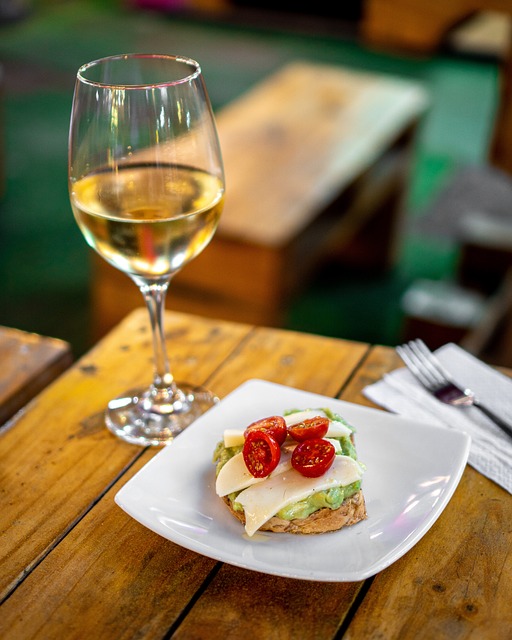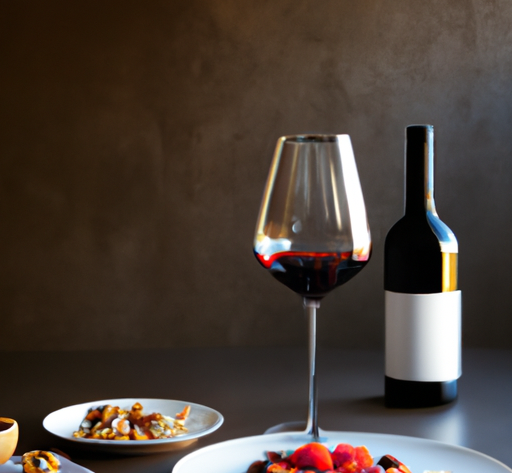Have you ever wondered why certain foods taste even better when paired with the right wine? It’s like a magical combination that elevates the flavors and turns a good meal into a truly memorable one. Well, today we’re going to dive into the fascinating world of food and wine pairing, exploring the perfect combinations that will make your taste buds dance with delight.
When it comes to pairing food with wine, there’s a lot more to consider than just personal preferences. It’s all about finding that harmonious balance between the flavors of your dish and the characteristics of the wine. The acidity, sweetness, and richness of both the food and the wine play a crucial role in creating a well-rounded pairing.
In this article, we’ll delve deeper into the different categories of food and wine pairings, from classic combinations like red wine with steak or white wine with seafood, to more adventurous pairings that bring out unexpected flavors. We’ll also explore the importance of considering the regional and cultural influences in pairing food and wine.
So, get ready to tantalize your taste buds and discover the art of pairing food and wine. Whether you’re a seasoned foodie or just starting to explore the world of wine, this article will provide valuable insights and tips that will make your dining experiences truly exceptional. Stay tuned for more mouthwatering information!

The Art of Pairing: Exploring the Perfect Food and Wine Combinations
Are you an avid foodie and wine lover? Do you believe that the perfect meal is incomplete without a carefully selected wine to accompany it? If so, you’re in luck! This article will take you on a journey through the art of food and wine pairing, exploring the principles, strategies, and iconic combinations that can elevate your culinary experience to new heights.
Understanding Principles of Pairing
Pairing food and wine is a delicate dance that requires an understanding of the principles behind it. The main idea is to create a harmonious balance between the flavors and textures of the food and the characteristics of the wine. The goal is to enhance both the food and the wine, allowing each to shine in all its glory.
When considering a pairing, start by examining the flavors of the dish and the wine. Are they complementary or contrasting? For example, a dish with a rich, creamy sauce may pair well with a buttery Chardonnay, while a spicy dish may benefit from the cooling effect of a sweeter Riesling.
Another important factor to consider is the weight and intensity of both the food and the wine. Lighter, delicate dishes are best paired with lighter-bodied wines, while heartier and more robust dishes can handle a fuller-bodied wine. This principle helps to ensure that neither the food nor the wine overwhelms the other.
Matching Wine with Light and Delicate Dishes
When it comes to pairing wine with light and delicate dishes, the key is to choose a wine that will not overpower the subtle flavors of the food. Light-bodied white wines such as Sauvignon Blanc or Pinot Grigio are excellent choices for dishes like salads, steamed fish, or grilled vegetables. Their crisp acidity and refreshing flavors can perfectly complement the lightness of these dishes.
For dishes with a slightly richer texture, such as roasted chicken or poached seafood, a dry Rosé can be a great option. The fruity notes and slight tannins in the Rosé bring out the flavors of the dish without overwhelming them.
Pairing Red Wine with Hearty and Savory Foods
When it comes to heartier and more savory dishes, red wines are often the preferred choice. Their fuller body and bolder flavors can stand up to the richness and intensity of these dishes. For instance, a juicy steak or a hearty beef stew pairs beautifully with a Cabernet Sauvignon or a bold Syrah. These red wines have enough structure and tannins to complement the robust flavors of the meat.
If you prefer a lighter red wine, such as a Pinot Noir, it can be a wonderful match for dishes like roasted pork tenderloin or grilled salmon. The gentle tannins and elegant fruitiness of a Pinot Noir can harmonize with the flavors of these dishes without overpowering them.
Enhancing Flavors with White Wine and Seafood
One classic pairing that never disappoints is white wine with seafood. The crisp acidity and vibrant flavors of white wines can help to enhance the delicate flavors of seafood dishes, allowing them to shine.
For lighter seafood dishes like oysters, shrimp, or grilled fish, a dry white wine such as a Chablis or a Sancerre is an excellent choice. These wines have a mineral note and bright acidity that can cut through the richness of the seafood, creating a well-balanced combination.
For more complex seafood dishes, such as lobster or crab, a buttery and oaky Chardonnay can be the perfect match. The creamy texture and toasty flavors of the Chardonnay can complement the richness of the shellfish, creating a decadent pairing.
Discovering the Complexity of Cheese and Wine Pairings
Cheese and wine are a match made in heaven. The complexity and variety of cheeses can make for an exciting pairing adventure. The general rule of thumb is to pair wines and cheeses with similar characteristics. For example, a tangy and acidic goat cheese pairs wonderfully with a crisp and citrusy Sauvignon Blanc. On the other hand, a bold and robust blue cheese can be tamed by a sweet and fortified Port wine.
Experimenting with different combinations can be a delightful journey of discovery. From creamy Brie to sharp Cheddar, there is a wine out there waiting to enhance the flavors of your favorite cheese.
Exploring the Sweet and Savory with Dessert Wines
Dessert wines are the perfect way to end a meal on a sweet note. These wines are often sweeter and richer in flavors, making them a fantastic companion to desserts or even savory dishes.
pairing a sweet dessert wine like a Late Harvest Riesling or a Sauternes with a creamy cheesecake or a fruit tart can create a delightful contrast of flavors. The sweetness of the wine can balance out the richness and acidity of the dessert, creating a harmonious combination.
If you’re feeling adventurous, try pairing a dessert wine with a savory dish, such as a blue cheese or foie gras. The sweetness of the wine can complement the bold and intense flavors of these dishes, creating a unique and unforgettable pairing.
Unveiling the Art of Pairing Wine with Spicy Cuisine
pairing wine with spicy cuisine can be a challenge, as the heat can overpower the flavors of the wine. However, with some strategic choices, you can find a match that complements and cools down the spiciness.
When it comes to spicy dishes like Thai or Indian cuisine, a slightly sweeter wine can be a great choice. Look for wines with a touch of residual sugar, such as a Gewürztraminer or a Riesling. The sweetness in the wine can balance out the heat and enhance the flavors of the dish.
For bolder and spicier flavors, like Mexican or Cajun cuisine, a fruity and low-tannin red wine like a Zinfandel or a Shiraz can be a good option. These wines have enough fruitiness to stand up to the spice without overpowering it.
Considering Regional Pairings: Iconic Matches from Around the World
The world of food and wine pairing is vast, with each region having its own iconic matches. Some examples include Prosciutto and Chianti from Italy, Champagne and oysters from France, or Malbec and grilled steak from Argentina.
Exploring these regional pairings can open up a whole new world of flavors and combinations. By understanding the characteristics of each wine and cuisine, you can create harmonious and authentic pairings that truly showcase the best of each region.
Experimenting with Unconventional Food and Wine Pairings
While traditional pairings are always a safe bet, don’t be afraid to step outside the box and try unconventional combinations. Breaking the rules can lead to exciting discoveries and unexpected flavor combinations.
For example, pairing a rich and full-bodied red wine with a dark chocolate dessert can create a decadent and indulgent pairing. The bitterness of the chocolate can be balanced by the fruitiness and tannins of the wine.
Remember, the art of food and wine pairing is subjective, and personal preferences play a significant role. Don’t be afraid to trust your palate and experiment with different combinations until you find the ones that truly delight your taste buds.
Conclusion: Elevating the Culinary Experience with Perfect Food and Wine Combinations
The art of pairing food and wine is all about creating a harmonious and balanced experience that enhances the flavors of both. By understanding the principles of pairing, exploring regional matches, and experimenting with unconventional combinations, you can elevate your culinary experience to new heights.
Whether you’re enjoying a light and delicate dish with a refreshing white wine, savoring a hearty and savory meal with a bold red, or indulging in a sweet dessert wine with a decadent treat, the perfect food and wine combination can truly transform an ordinary meal into an extraordinary one.
So, the next time you sit down to enjoy a delicious meal, don’t forget to select a wine that will complement and enhance the flavors on your plate. Cheers to the art of pairing and the joy it brings to the foodie and wine lover in all of us!

